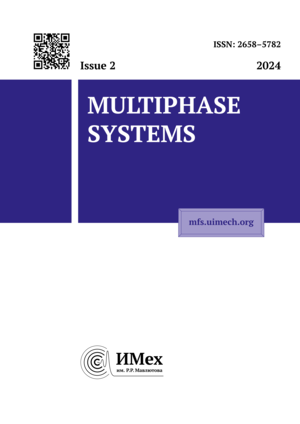

Solutions of partial differential equations, even in the case of their explicit expression by means of Fourier series with respect to the eigenfunctions of the corresponding differential operator or convolutions with corresponding kernels, being represented by series or integrals, actually again represent infinite objects. Therefore, the problem arises of their approximation by finite objects, one of the mathematical formulations of which is contained in the definition of a Computational (numerical) diameter (C(N)D). The problem of a Computational (numerical) diameter C(N)D consists in the sequential execution of three tasks: C(N)D-1 recovery from accurate information, depending on the type of functionals and algorithms for processing numerical information obtained from them, indicating the optimal computational aggregate of approximation, To C(N)D-2 in an optimal computing aggregate, specifying the boundaries of the values of inaccurate data of information functionals that preserve the order of recovery from accurate information, C(N)D-3 the question is being studied: ”does or does not exist another computational aggregate with a structure similar to the structure of the optimal computational aggregate under consideration, and even, perhaps, more general, but with a larger margin of error of the optimal computing unit from the problem C(N)D-2“. This article discusses the approximation of solutions to the Cauchy problem for the heat equation with initial conditions from the Ulyanov classes in uniform and Hilbert metrics (C(N)D-2) in the two-dimensional case. Ordinal estimates of the approximation are obtained indicating the optimal computational aggregates based on inaccurate data from the trigonometric Fourier- Lebesgue coefficients. The limits of inaccuracies of the trigonometric Fourier-Lebesgue coefficients of the initial data, preserving the order of approximation according to the exact data, are indicated.
approximation of solutions of the heat equation,
Cauchy problem,
Ul’yanov classes,
inaccurate date,
Computational (numerical) diameter
Solutions of partial differential equations, even in the case of their explicit expression by means of Fourier series with respect to the eigenfunctions of the corresponding differential operator or convolutions with corresponding kernels, being represented by series or integrals, actually again represent infinite objects. Therefore, the problem arises of their approximation by finite objects, one of the mathematical formulations of which is contained in the definition of a Computational (numerical) diameter.
The problem of a Computational (numerical) diameter consists in the sequential execution of three problems: C(N)D-1 – recovery by accurate information (depending on the type of functionals and algorithms for processing numerical information obtained from them) with indicating the optimal computational aggregates of approximation, C(N)D-2 – in an optimal computational aggregates, specifying the boundaries of the values of inaccurate information of functionals that preserve the order of recovery by accurate information, C(N)D-3 – the question is being studied: ”does or does not exist another computational aggregates with a structure similar to the structure of the optimal computational aggregates from C(N)D-2, and even, perhaps, more general, but with a larger limiting error“.
In the article is considered the problem of approximation of solutions of Cauchy problem for the heat equation
with initial conditions
from
the Ul’yanov classes in uniform and Hilbert metrics in the two-dimensional case by inaccurate information.
Solutions of partial differential equations, along with a function, derivative, integral, are the main mathematical models and the problem of approximating them using accurate and inaccurate information, indicating optimal computational aggregates, is relevant.
P.L. Ul’yanov established irreproachable connections between the rate of decrease of the Fourier coefficients of a function of one variable and the rate of growth of its derivatives.
Based on these results, N.Temirgaliev defined
Ul’yanov classes. The class scale is a classification of functions in a wide range from extremely low smoothness to analytical and
their subclasses. The article studies the case, the case of periodic functions of two variables
,
whose trigonometric Fourier coefficients decrease exponentially.
Y. Nurmoldin obtained the order of error of approximation of solutions of the Cauchy problem for the heat equation by accurate information obtained from
trigonometric Fourier coefficients of the initial conditions
from
.
The problem of C(N)D-1 – discretization of solutions of heat equations with initial conditions from the Korobov, Sobolev with a dominant mixed derivative, Nikolsky-Besov classes, according to accurate information, are considered by L.K. Hua, Y. Wang, K. Sherniyazov, Sh. Azhgaliyev. By G.G. Magaril-Il’yaev, K.Yu. Osipenko, A. Utesov are considered the of discretization of solutions of the heat equation based on inaccurate information.
In the article are obtained the order of approximation with indicating the optimal computational aggregates based on inaccurate information from the trigonometric Fourier-Lebesgue
coefficients:
for uniform metric and
for Hilbert metrics. The limits of inaccuracies of the trigonometric Fourier-Lebesgue coefficients of the initial information, preserving the order of approximation according to
the accurate information, are indicated:
for uniform metric and
for Hilbert metrics.
The anisotropic case of decreasing Fourier coefficients with exponential velocity has a completely new form, in contrast to decreasing power-law velocity:
the unimproved relationship between the smoothness parameters
and
and the amount of information
